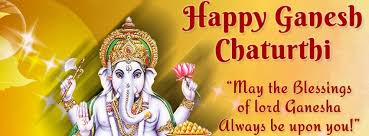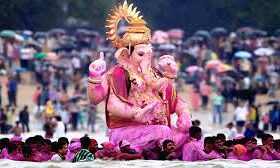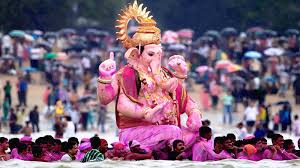Introduction
Ganesh Chaturthi is a ten-day Hindu festival that celebrates the birth of Lord Ganesha, the son of Lord Shiva and Goddess Parvati. It is celebrated in the Hindu month of Bhadrapada, which falls between August and September. The festival is celebrated with great enthusiasm and devotion in various parts of India, especially in Maharashtra, Gujarat, and Karnataka.
Significance of Ganesh Chaturthi
Ganesh Chaturthi is an important festival in the Hindu religion and is celebrated for various reasons. Some of the significance of the festival are:
- Celebration of Lord Ganesha’s birth: The festival marks the birth of Lord Ganesha, who is considered the God of wisdom, knowledge, and new beginnings.
- Removal of obstacles: Lord Ganesha is also known as Vighnaharta, which means the remover of obstacles. It is believed that worshipping Lord Ganesha during the festival can help remove obstacles and bring success and prosperity.
- Unity and harmony: Ganesh Chaturthi is a festival that brings people together, irrespective of their caste, creed, or religion. It promotes unity and harmony among people.


History of Ganesh Chaturthi
The history of Ganesh Chaturthi dates back to the time of the Maratha Empire in the 17th century. The festival was first celebrated by Chhatrapati Shivaji Maharaj, who was a great devotee of Lord Ganesha. The festival gained popularity during the British rule in India, when freedom fighter Lokmanya Tilak used it as a platform to unite people against the British.
Traditions and Celebrations
Ganesh Chaturthi is celebrated with great enthusiasm and devotion in various parts of India. The celebrations usually last for ten days, with the first day being the most important. Some of the traditions and celebrations of Ganesh Chaturthi are:
- Installation of the idol: A clay idol of Lord Ganesha is installed in homes and public pandals, and worshipped for ten days.
- Puja and aarti: The idol is worshipped with flowers, sweets, and other offerings. Aarti is performed to the sound of drums and bells.
- Visarjan: On the tenth day, the idol is taken in a procession and immersed in a water body, symbolizing the departure of Lord Ganesha to his abode.
- Modak: Modak, a sweet dumpling made of rice flour, jaggery, and coconut, is a popular dish prepared during the festival.
- Decorations: Homes and pandals are decorated with lights, flowers, and other decorations.
Environmental Impact
The immersion of the idol in water bodies during the festival has a significant impact on the environment. The use of non-biodegradable materials such as plaster of Paris and chemical dyes in the making of the idol can pollute the water bodies and harm aquatic life. To address this issue, eco-friendly idols made of clay and natural dyes are being promoted.
Conclusion
Ganesh Chaturthi is a festival that celebrates the birth of Lord Ganesha and promotes unity, harmony, and the removal of obstacles. The festival has a rich history and is celebrated with great enthusiasm and devotion in various parts of India. However, it is important to be mindful of the environmental impact of the festival and promote eco-friendly practices.






















Leave a Reply